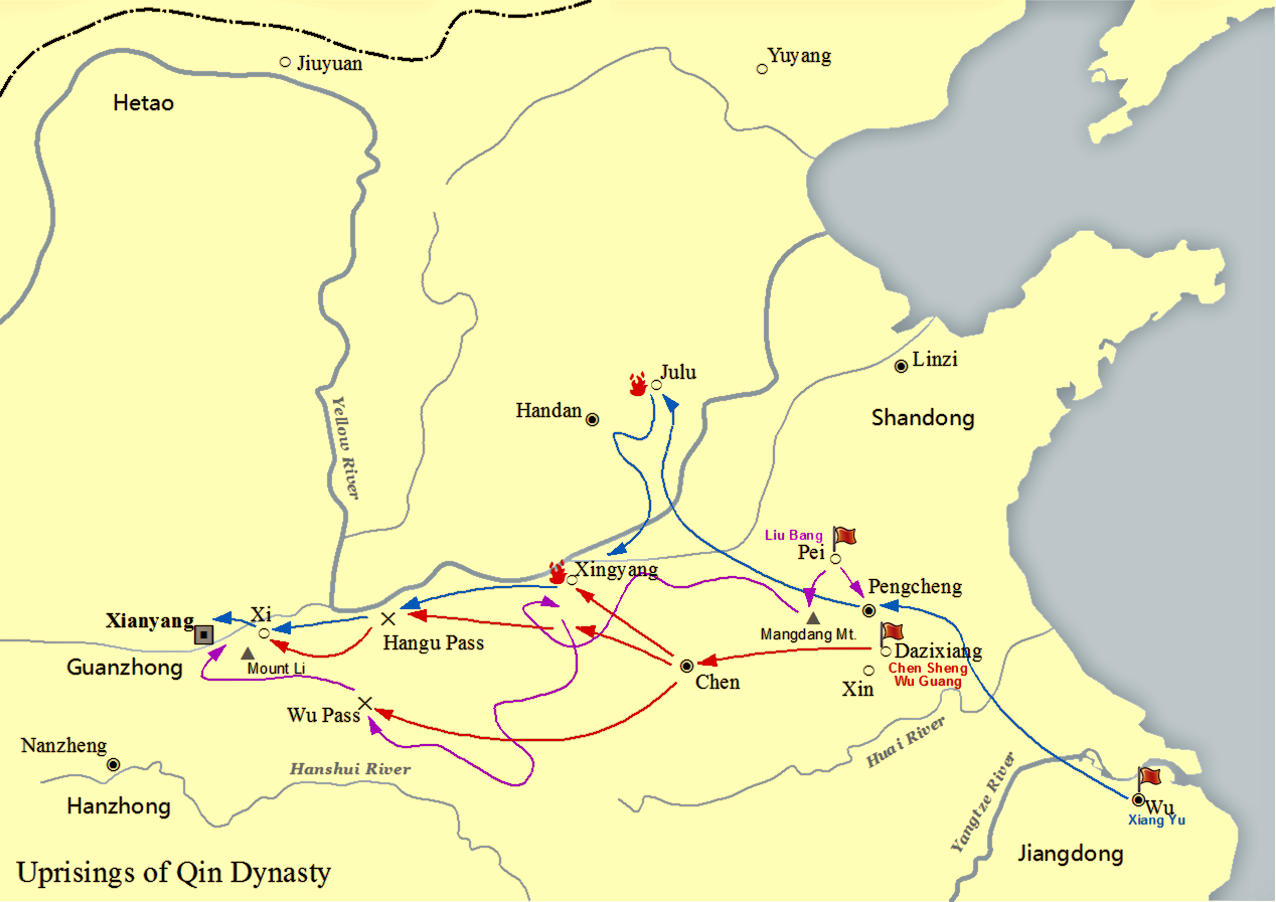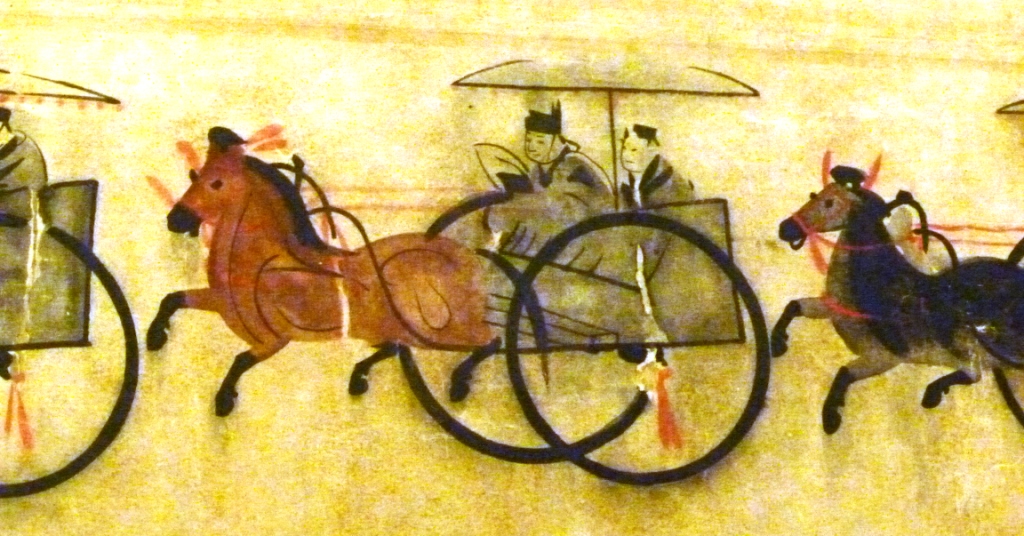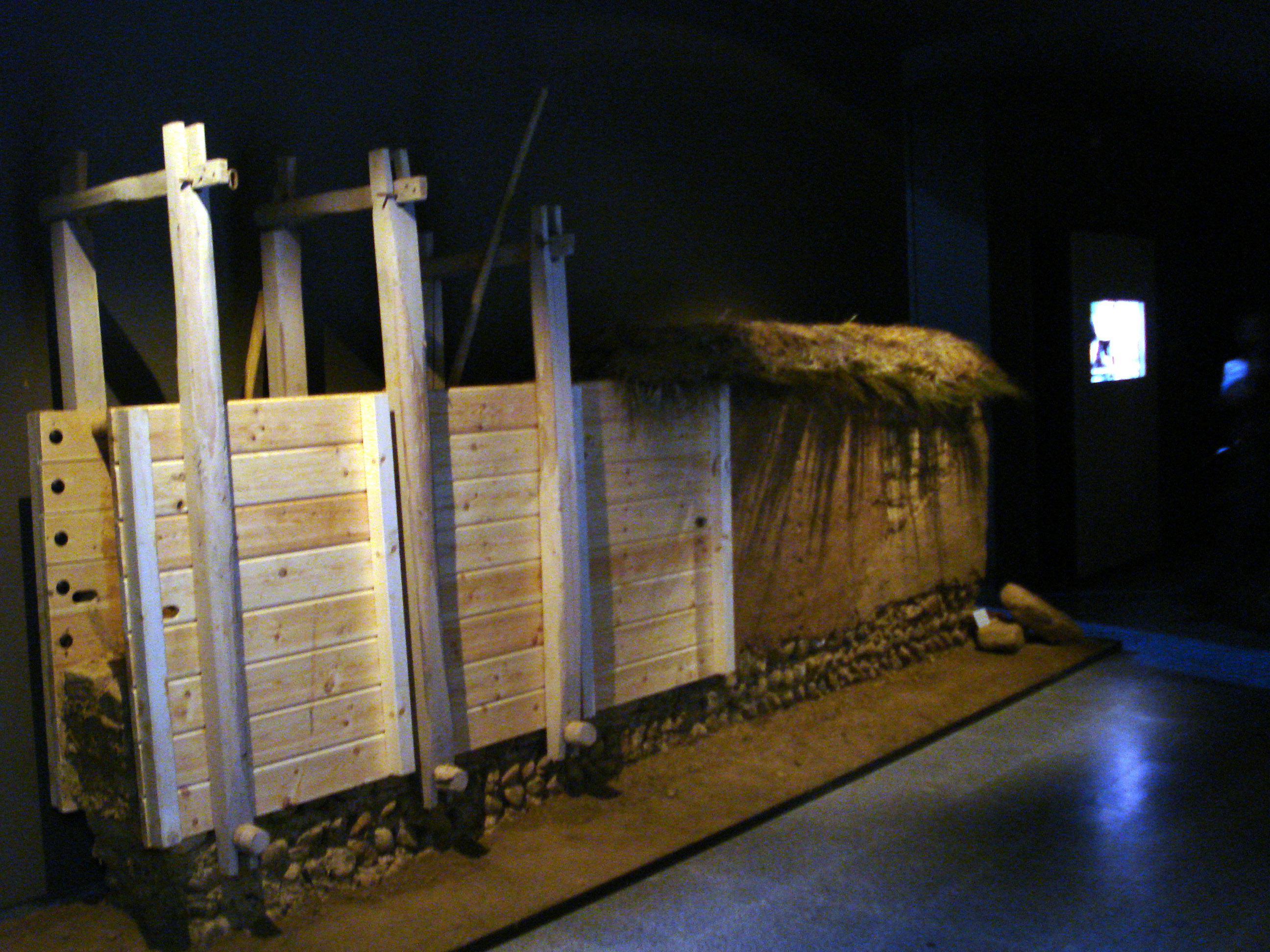|
Terracotta Army
The Terracotta Army is a collection of terracotta sculptures depicting the armies of Qin Shi Huang, the first emperor of China. It is a form of funerary art buried with the emperor in 210–209 BCE with the purpose of protecting the emperor in his afterlife. The figures, dating from approximately the late third century BCE, were discovered in 1974 by local farmers in Lintong County, outside Xi'an, Shaanxi, China. The figures vary in height according to their roles, the tallest being the generals. The figures include warriors, chariots and horses. Estimates from 2007 were that the three pits containing the Terracotta Army held more than 8,000 soldiers, 130 chariots with 520 horses, and 150 cavalry horses, the majority of which remained buried in the pits near Qin Shi Huang's mausoleum. Other terracotta non-military figures were found in other pits, including officials, acrobats, strongmen, and musicians. History The construction of the tomb was described by historian S ... [...More Info...] [...Related Items...] OR: [Wikipedia] [Google] [Baidu] |
Lintong District
Lintong District (), formerly Lintong County, is one of 11 urban districts of the prefecture-level city of Xi'an, the capital of Shaanxi Province, Northwest China. The district was approved to establish from the former ''Lintong County'' () by the Chinese State Council on June 25, 1997. The Terracotta Army and the Mausoleum of the First Qin Emperor was discovered in March 1974 near this district. The district borders the prefecture-level cities of Xianyang to the northwest and Weinan to the east, Gaoling County to the northeast, Baqiao District to the southeast, Lianhu and Xincheng Districts to the south, and Chang'an District to the southwest. Artifacts from the tomb of Qin Shi Huang, China's first emperor, can be viewed at the Emperor Qinshihuang's Mausoleum Site Museum () in Lintong District. The National Time Service Center, the Chinese Academy of Sciences (), formerly known as Shaanxi Astronomical Observatory (), was established in 1966 in Lintong responsible for the t ... [...More Info...] [...Related Items...] OR: [Wikipedia] [Google] [Baidu] |
Xiang Yu
Xiang Yu (, –202 BC), born Xiang Ji (), was the Hegemon-King (Chinese: 霸王, ''Bà Wáng'') of Western Chu during the Chu–Han Contention period (206–202 BC) of China. A noble of the Chu state, Xiang Yu rebelled against the Qin dynasty and became a prominent warlord. He was granted the title of "Duke of Lu" () by King Huai II of the restoring Chu state in 208 BC. The following year, he led the Chu forces to victory at the Battle of Julu against the Qin armies led by Zhang Han. After the fall of Qin, Xiang Yu was enthroned as the "Hegemon-King of Western Chu" () and ruled a vast area covering modern-day central and eastern China, with Pengcheng as his capital. He engaged Liu Bang, the founding emperor of the Han dynasty, in a long struggle for power, known as the Chu–Han Contention, which concluded with his eventual defeat at the Battle of Gaixia and his suicide. Xiang Yu is depicted in the Wu Shuang Pu (, Table of Peerless Heroes) by Jin Guliang. Names and tit ... [...More Info...] [...Related Items...] OR: [Wikipedia] [Google] [Baidu] |
I Was Impressed With The Life-like Expression (35300697030)
I, or i, is the ninth letter and the third vowel letter of the Latin alphabet, used in the modern English alphabet, the alphabets of other western European languages and others worldwide. Its name in English is ''i'' (pronounced ), plural ''ies''. History In the Phoenician alphabet, the letter may have originated in a hieroglyph for an arm that represented a voiced pharyngeal fricative () in Egyptian, but was reassigned to (as in English "yes") by Semites, because their word for "arm" began with that sound. This letter could also be used to represent , the close front unrounded vowel, mainly in foreign words. The Greeks adopted a form of this Phoenician ''yodh'' as their letter ''iota'' () to represent , the same as in the Old Italic alphabet. In Latin (as in Modern Greek), it was also used to represent and this use persists in the languages that descended from Latin. The modern letter ' j' originated as a variation of 'i', and both were used interchangeably for ... [...More Info...] [...Related Items...] OR: [Wikipedia] [Google] [Baidu] |
Chariot (China)
The ancient Chinese chariot () was used as an attack and pursuit vehicle on the open fields and plains of ancient China from around 1200 BCE. Chariots also allowed military commanders a mobile platform from which to control troops while providing archers and soldiers armed with dagger-axes increased mobility. They reached a peak of importance during the Spring and Autumn period, but were largely superseded by cavalry during the Han Dynasty. History Traditional sources attribute the invention of the chariot to the Xia dynasty minister Xi Zhong, and say they were used at the Battle of Gan (甘之戰) in the 21st century BCE. However archeological evidence shows that small scale use of the chariot began around 1200 BCE in the late Shang dynasty.Contemporary oracle bone inscriptions of the character depict a chariot-like two wheeled vehicle with a single pole for the attachment of horses. Chariots reached their apogee and remained a powerful weapon until the end of the Warring ... [...More Info...] [...Related Items...] OR: [Wikipedia] [Google] [Baidu] |
Soil
Soil, also commonly referred to as earth or dirt, is a mixture of organic matter, minerals, gases, liquids, and organisms that together support life. Some scientific definitions distinguish ''dirt'' from ''soil'' by restricting the former term specifically to displaced soil. Soil consists of a solid phase of minerals and organic matter (the soil matrix), as well as a porous phase that holds gases (the soil atmosphere) and water (the soil solution). Accordingly, soil is a three-state system of solids, liquids, and gases. Soil is a product of several factors: the influence of climate, relief (elevation, orientation, and slope of terrain), organisms, and the soil's parent materials (original minerals) interacting over time. It continually undergoes development by way of numerous physical, chemical and biological processes, which include weathering with associated erosion. Given its complexity and strong internal connectedness, soil ecologists regard soil as an ecosystem. ... [...More Info...] [...Related Items...] OR: [Wikipedia] [Google] [Baidu] |
Terracotta Army Pit 1 - 2
Terracotta, terra cotta, or terra-cotta (; ; ), in its material sense as an earthenware substrate, is a clay-based unglazed or glazed ceramic where the fired body is porous. In applied art, craft, construction, and architecture, terracotta is the term normally used for sculpture made in earthenware and also for various practical uses, including vessels (notably flower pots), water and waste water pipes, roofing tiles, bricks, and surface embellishment in building construction. The term is also used to refer to the natural brownish orange color of most terracotta. In archaeology and art history, "terracotta" is often used to describe objects such as figurines not made on a potter's wheel. Vessels and other objects that are or might be made on a wheel from the same material are called earthenware pottery; the choice of term depends on the type of object rather than the material or firing technique. Unglazed pieces, and those made for building construction and industry, are ... [...More Info...] [...Related Items...] OR: [Wikipedia] [Google] [Baidu] |
Rammed Earth
Rammed earth is a technique for constructing foundations, floors, and walls using compacted natural raw materials such as earth, chalk, lime, or gravel. It is an ancient method that has been revived recently as a sustainable building method. Under its French name of pisé it is also a material for sculptures, usually small and made in molds. It has been especially used in Central Asia and Tibetan art, and sometimes in China. Edifices formed of rammed earth are on every continent except Antarctica, in a range of environments including temperate, wet, semiarid desert, montane, and tropical regions. The availability of suitable soil and a building design appropriate for local climatic conditions are the factors that favour its use. The French term "pisé de terre" or "terre pisé" was sometimes used in English for architectural uses, especially in the 19th century. The process Making rammed earth involves compacting a damp mixture of subsoil that has suitable pro ... [...More Info...] [...Related Items...] OR: [Wikipedia] [Google] [Baidu] |
Chinese Pyramids
The term Chinese pyramids refers to pyramidal shaped structures in China, most of which are ancient mausoleums and burial mounds built to house the remains of several early emperors of China and their imperial relatives. About 38 of them are located around – north-west of Xi'an, on the Guanzhong Plains in Shaanxi Province. The most famous is the Mausoleum of the First Qin Emperor, northeast of Xi'an and 1.7 km west of where the Terracotta Army was found. Earliest tombs The earliest tombs in China are found just north of Beijing in the Inner Mongolia Autonomous Region and in Liaoning. They belong to the Neolithic Hongshan culture (4700 to 2900 BC). The site of Niuheliang in Liaoning contains a pyramidal structure. Information available in the West In 1667 the Jesuit Father Athanasius Kircher wrote about Chinese pyramids in his book ''China monumentis Illustrata''. The existence of "pyramids" in China remained little known in the Western world until the 1910s. The ... [...More Info...] [...Related Items...] OR: [Wikipedia] [Google] [Baidu] |
Terracotta Army-China2
Terracotta, terra cotta, or terra-cotta (; ; ), in its material sense as an earthenware substrate, is a clay-based unglazed or glazed ceramic where the fired body is porous. In applied art, craft, construction, and architecture, terracotta is the term normally used for sculpture made in earthenware and also for various practical uses, including vessels (notably flower pots), water and waste water pipes, roofing tiles, bricks, and surface embellishment in building construction. The term is also used to refer to the natural brownish orange color of most terracotta. In archaeology and art history, "terracotta" is often used to describe objects such as figurines not made on a potter's wheel. Vessels and other objects that are or might be made on a wheel from the same material are called earthenware pottery; the choice of term depends on the type of object rather than the material or firing technique. Unglazed pieces, and those made for building construction and industry, are ... [...More Info...] [...Related Items...] OR: [Wikipedia] [Google] [Baidu] |
Zhao Kangmin
Zhao Kangmin (; July 1936 – 16 May 2018) was a Chinese archaeologist best known for discovering and naming the Terracotta Warriors of the Mausoleum of Qin Shi Huang, one of the most famous archaeological discoveries of the 20th century. Fragments of the warriors were initially found in 1974 by farmers digging a well, but Zhao was officially credited as the discoverer as he was the first to recognize the significance of the fragments and reconstruct them into life-size statues. He also led or participated in many other excavations and served as a longtime curator of the Lintong Museum. Early life and career Zhao was born in July 1936. He worked as a farmer but loved history. In 1961, he was assigned to work at the Lintong County Cultural Center (later Lintong Museum). Lintong, just outside of Xi'an, an ancient capital of China, is rich with archaeological sites, but the museum was tiny and Zhao was its only employee in charge of cultural relics and archaeology. He had no forma ... [...More Info...] [...Related Items...] OR: [Wikipedia] [Google] [Baidu] |


.jpg)
